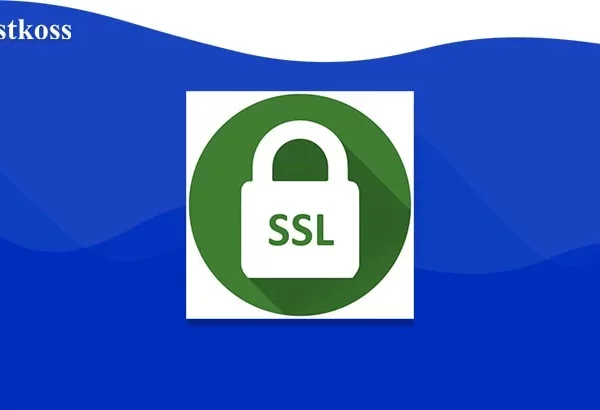In today’s digital age, ensuring the security and confidentiality of information is of paramount importance. Encryption plays a key role in achieving this goal by allowing data to be converted into an unreadable format accessible only to authorized individuals. The encryption process involves the use of cryptographic keys and mathematical algorithms. In this article, we will look at the three main types of encryption – symmetric, asymmetric, and hybrid encryption. We will start by looking at symmetric encryption.
Symmetric encryption

Symmetric encryption, as the name implies, uses a single cryptographic key for both encryption and decryption. The simplicity of using a single key makes the process straightforward. To understand the essence of symmetric encryption, consider the following example:
Imagine two close friends, Anton and Alice, living in Kiev. Due to certain circumstances, Alice has to move outside the city. The only means of communication they have is the post office. However, they fear that their letters may be intercepted and read by outsiders.
To secure their correspondence, Anton and Alice decide to encrypt their messages. They agree on a simple encryption technique: move each letter seven positions down the alphabet. For example, the word “Apple” will be written as “hwwsl” (A -> H, P -> W, L -> S, E -> L). To decrypt the message, the reverse process must be done, moving each letter back seven positions. This encryption technique is reminiscent of the ancient “Caesar cipher”, which is known to have been used by the Roman emperor and military leader Gaius Julius Caesar.
Advantages of symmetric encryption
Symmetric encryption has notable advantages, most notably its simplicity. Using a single key for encryption and decryption simplifies the process. Moreover, when encrypting significant amounts of data, symmetric encryption is an effective choice. Additional advantages include:
- Speed: Symmetric encryption algorithms are significantly faster than their asymmetric counterparts, as we will discuss later.
- Computational power: The computational resources required for symmetric encryption are comparatively lower.
- Minimal impact on Internet speed: Symmetric encryption does not have a significant impact on the speed of data transfer over the Internet.
Three popular symmetric encryption algorithms
Although Caesar’s Cipher demonstrates an elementary approach to symmetric encryption, modern encryption methods are based on complex mathematical functions that are very difficult to break. There are many symmetric encryption algorithms, but we will focus on the three most commonly used:
- AES (Advanced Encryption Standard): AES is considered one of the strongest symmetric encryption algorithms. It has superseded the outdated DES algorithm (discussed later) and offers strong encryption capabilities. AES works with 128-bit blocks of data using a variable-length key (typically 128, 192, or 256 bits).
- DES (Data Encryption Standard): Introduced in 1976 by IBM, DES was the first widely used symmetric encryption method. Originally developed to protect sensitive government information, it became the official encryption standard for U.S. federal agencies in 1977. DES breaks plaintext data into 64-bit blocks and applies various encryption processes over 16 cycles, creating 64-bit blocks of ciphertext at the output. However, due to the small key length, DES was deemed obsolete in 2005 and replaced by AES.
- 3DES (Triple Data Encryption Standard): as an enhancement to DES, 3DES applies the DES algorithm three times sequentially to each block of data. This process greatly increases the strength of the encryption. Although 3DES provides greater security than DES, it is slower and less efficient than AES, making it less common in today’s applications.
It is worth noting that the widely used TLS 1.2 protocol today does not use the DES encryption method because of its vulnerability.
Asymmetric encryption

While symmetric encryption uses a single key for encryption and decryption, asymmetric encryption uses a more complex approach of multiple mathematically interrelated keys. This type of encryption is also known as public key cryptography and involves a “public key” and a “private key”.
Symmetric encryption worked well for Alice and Anton when they needed to share information with each other. However, if Anton wants to communicate securely with a large number of people, using a different key for each person becomes impractical and inconvenient.
To solve this problem, Anton uses public key encryption. In this method, Anton gives out his public key to anyone who wants to send him information, and keeps his private key secret. He instructs others to encrypt the data using his public key, ensuring that it can only be decrypted using his private key. This approach eliminates the risk of compromising the private key, since the data can only be decrypted using Anton’s private key.
Advantages of asymmetric encryption
Asymmetric encryption has a number of advantages, starting with increased security. In this method, a public key that is in the public domain is used to encrypt the data and a corresponding private key is used to decrypt it. This ensures that the data remains protected from potential man-in-the-middle (MiTM) attacks. Moreover, for web and email servers that interact with a large number of clients, managing and protecting only one key is more efficient. In addition, asymmetric encryption allows encrypted connections to be established without the need for offline key exchange, simplifying the process.
Another important function of asymmetric encryption is authentication. By encrypting data with the recipient’s public key, it ensures that only the intended recipient with the corresponding private key can decrypt and access the data. This verification mechanism confirms the identity of the person or organization with whom the person is communicating or exchanging information.
RSA asymmetric encryption algorithm (Rivest-Shamir-Adleman)
Invented in 1977 by MIT scientists Ron Rivest, Adi Shamir, and Leonard Adleman, RSA is the most widely used asymmetric encryption algorithm. Its effectiveness lies in the concept of “simple factorization”. RSA involves selecting two different random prime numbers of a given size, such as 1024 bits, and multiplying them to produce a large number. The challenge is to determine the original prime number from this multiplied result. Solving this puzzle is nearly impossible for today’s supercomputers, let alone human computation.
In a 2010 study, a group of volunteers spent more than 1,500 years of computing time on hundreds of computers to crack a 768-bit RSA key, well below the current standard of 2,048-bit keys.
The advantage of RSA encryption is its scalability, as the key length can vary: 768-bit, 1024-bit, 2048-bit, 4096-bit, etc. The simplicity and adaptability of RSA has made it the primary asymmetric encryption algorithm for a variety of applications, including SSL/TLS certificates, cryptocurrencies, and email encryption.
Hybrid encryption
Although asymmetric encryption algorithms such as RSA and ECC provide strong security and authentication, they have their limitations. Symmetric encryption, on the other hand, is fast and efficient, but lacks authentication capabilities. To address these issues and create synergies between encryption systems, the concept of hybrid encryption emerged, taking advantage of both symmetric and asymmetric encryption.
Hybrid encryption in SSL/TLS certificates:
Hybrid encryption is not a separate method, but rather a combination of symmetric and asymmetric encryption methods. It is commonly used in SSL/TLS certificates during the TLS handshake process, which establishes a secure connection between servers and clients (web browsers).
The TLS handshake begins by verifying the identity of both parties using private and public keys. After identity verification, subsequent data transfer takes place using symmetric encryption and an ephemeral (session) key. This enables the rapid exchange of large amounts of data online.
Benefits of hybrid encryption
Hybrid encryption offers a practical solution that overcomes the shortcomings of individual encryption methods. By using symmetric encryption for data transmission, it enables fast and efficient communication. At the same time, the preceding asymmetric encryption provides the necessary identity verification, ensuring secure communication between parties.
Advantages of hybrid encryption include:
- Speed and efficiency: Symmetric encryption, with its ability to quickly encrypt large amounts of data, speeds up the encryption and decryption processes, enabling fast data transfer.
- Authentication: Asymmetric encryption ensures that encrypted data is accessed by the intended recipient by verifying the identity of both parties involved in the communication.
- Hybrid encryption strikes a balance by enabling secure and efficient data exchange in various scenarios. It is widely used in areas such as SSL/TLS certificates, email encryption, and secure communication protocols.
Comparison of symmetric and asymmetric encryption methods
When it comes to deciding which type of encryption is best, there is no one-size-fits-all answer. The choice depends on the specific requirements and considerations in each situation. Let’s look at the advantages of symmetric and asymmetric encryption and present them in a comparative table.
| Symmetric encryption: | Asymmetric encryption: | Hybrid encryption: |
| In symmetric encryption, a single key is used to both encrypt and decrypt the data, making the process simpler and faster. | Asymmetric encryption uses a pair of keys: a public key and a private key. The public key is used for encryption and the private key is used for decryption. | In many cases, a hybrid encryption approach combining symmetric and asymmetric encryption techniques is used. |
| It is particularly suitable for efficient encryption of large amounts of data because it provides better performance and requires less processing power. | One of the main advantages of asymmetric encryption is its ability to provide authentication, guaranteeing the identity of the communicating parties. | Most modern SSL certificates use a hybrid method: asymmetric encryption for authentication and symmetric encryption for privacy. |
| Symmetric encryption uses a shorter key length, typically 128 to 256 bits. | Due to the complexity of the key pair process, asymmetric encryption is slower and requires more processing power. | This hybrid approach offers a comprehensive solution, protecting users’ personal data from being intercepted or tampered with by fraudsters. |
| Standard algorithms used in symmetric encryption include RC4, AES, DES, 3DES, and QUAD. | Asymmetric encryption uses longer key lengths, typically 1024 to 4096 bits. | By leveraging the strengths of both encryption methods, hybrid encryption ensures secure communications and data privacy. |
In conclusion, the choice between symmetric and asymmetric encryption depends on the specific requirements of each scenario. Symmetric encryption is characterized by high performance and efficiency when encrypting large amounts of data. Asymmetric encryption, on the other hand, provides authentication and identity verification. The hybrid encryption approach combines the best of both worlds, offering a robust solution widely used in SSL certificates and other applications requiring secure data transmission.
Read also:
- What is an SSL certificate, to why you should install it
- What is HTTP and HTTPS and how does it affect your website?
- How to get an SSL certificate for free
FAQs
Encryption is the process of converting data into a secret code to prevent unauthorized access.
The two main types of encryption are symmetric encryption and asymmetric encryption.
The best encryption algorithm depends on specific security requirements and performance considerations. However, AES is widely regarded as one of the most secure and efficient symmetric encryption algorithms.
Encryption ensures data security by converting plaintext into ciphertext, which can only be decrypted back into its original form using the appropriate key.
While encryption provides a high level of security, it is not foolproof. It is essential to use strong encryption algorithms and implement proper key management practices to mitigate potential risks.



